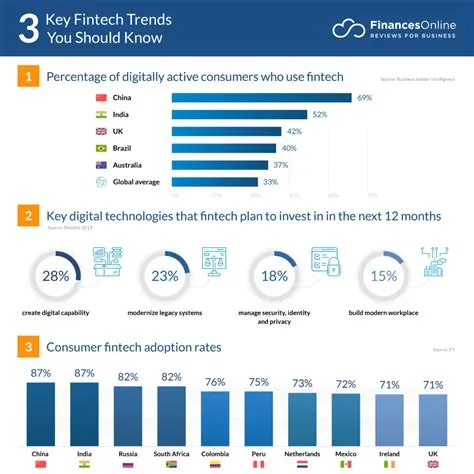Hey there, fellow investors! Ready to dive into the exciting world of micro-investing? Think of it like this: you’re not building a skyscraper overnight, you’re laying one perfectly-placed brick at a time. And in 2025, the micro-investing landscape is shaping up to be a pretty dynamic place, full of opportunities and interesting trends. Let’s explore seven key shifts that could significantly impact how we all approach small-scale investing.
1. The Rise of AI-Powered Robo-Advisors: Remember those clunky old financial advisors? Well, the future is here, and it’s smart, efficient, and personalized. AI-powered robo-advisors are becoming increasingly sophisticated, offering tailored investment strategies based on your risk tolerance, financial goals, and even your spending habits. It’s like having a personal financial guru in your pocket, accessible 24/7. Isn’t that amazing? This trend isn’t just about convenience; it’s about democratizing access to sophisticated investment strategies for everyone, regardless of their financial literacy.
2. fractional-shares-basics">fractional-shares-and-wealth-building">fractional Investing Takes Off: Want a piece of Apple or Google without breaking the bank? Fractional investing lets you do just that. Instead of buying a whole share, you can buy a fraction—think of it like buying a slice of a giant pizza instead of the entire pie. This significantly lowers the barrier to entry, allowing more people to participate in the stock market. It’s like the ultimate sharing economy, applied to investments! And with more brokerages offering fractional shares, this trend is only going to accelerate.
3. ESG (Environmental, Social, and Governance) Investing Gains Momentum: More and more people are aligning their investments with their values. ESG investing focuses on companies with strong environmental, social, and governance practices. This means investing in businesses that are committed to sustainability, ethical labor practices, and responsible corporate governance. It’s not just about making money; it’s about making a positive impact on the world. And guess what? Studies show that ESG investments can often perform just as well, if not better, than traditional investments. Who knew doing good could feel so good?
4. The Gamification of Investing: Remember how fun video games were? Well, some companies are bringing that same level of engagement to investing. They’re using gamification techniques—points, rewards, leaderboards—to make investing more interactive and accessible. It’s like turning your investment portfolio into a thrilling game. This approach, while potentially addictive, can encourage positive saving and investment habits, particularly among younger generations. But it’s important to remember it’s still real money, and responsible investing habits are key.
5. Micro-Investing Platforms Expand Their Offerings: Gone are the days when micro-investing platforms were solely focused on stocks. Now, we’re seeing diversification into other asset classes like bonds, ETFs, and even cryptocurrency-micro-investing">cryptocurrency-coins-tokens">cryptocurrency-basics">cryptocurrency. This gives investors more options to build well-rounded portfolios, tailoring their investments to their specific risk profiles and goals. It’s like having a one-stop shop for all your micro-investing needs. This expanded choice empowers the investor to build a more resilient portfolio.
6. Increased Financial Literacy Initiatives: With the rise of micro-investing, there’s also a growing focus on improving financial literacy. More resources, educational programs, and tools are becoming available to help individuals understand the basics of investing, risk management, and portfolio diversification. This increased access to information is vital for responsible investing. It empowers people to make informed decisions and avoid costly mistakes. We’re building a more financially savvy population.
7. The Growing Importance of Financial Wellness: Micro-investing isn’t just about accumulating wealth; it’s about building financial wellness. This holistic approach considers all aspects of an individual’s financial health, including saving, budgeting, debt management, and investing. It’s about achieving a state of financial stability and security. Micro-investing becomes one important part of a broader financial wellness strategy. It’s not just about the numbers; it’s about achieving peace of mind.
Conclusion:
The micro-investing landscape is dynamic and exciting. The trends we’ve discussed are transforming how people approach small-scale investing, making it more accessible, personalized, and engaging. From AI-powered robo-advisors to the gamification of investing, the future looks bright for those who want to start building their financial future, one small step at a time. Remember, it’s a marathon, not a sprint, so embrace the journey and enjoy the process of building your financial well-being.
FAQs:
1. What is the minimum amount I need to start micro-investing? Many platforms allow you to start with as little as $1 or $5, making it incredibly accessible to everyone.
2. Are micro-investing platforms safe? Reputable platforms are regulated and employ security measures to protect your investments. However, it’s always wise to research a platform before investing.
3. What are the risks associated with micro-investing? Like any investment, micro-investing carries risk, including the potential for loss. Diversification and understanding your risk tolerance are crucial.
4. How do I choose the right micro-investing platform? Consider factors such as fees, investment options, user-friendliness, and security features. Compare different platforms before making a decision.
5. Can I use micro-investing to reach specific financial goals? Absolutely! Micro-investing can be a powerful tool for achieving long-term goals like retirement, buying a house, or paying for education. Set clear goals and create a plan to reach them.

